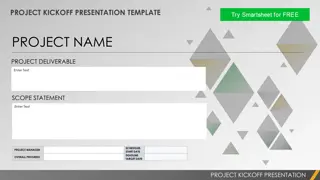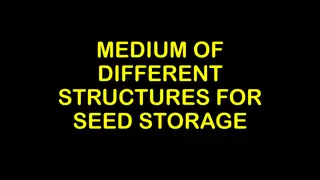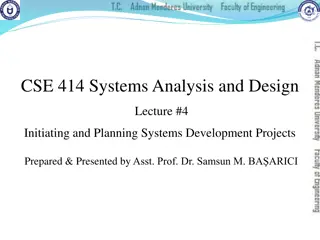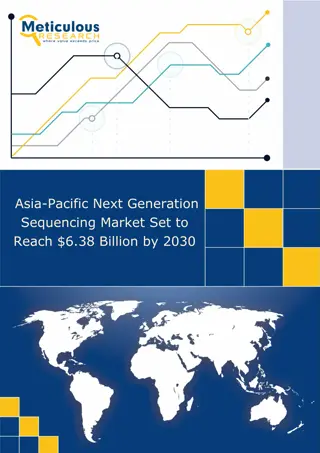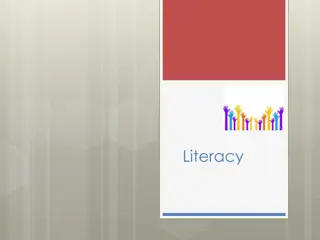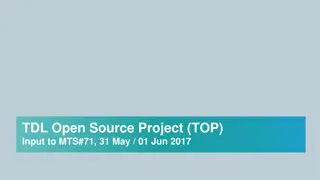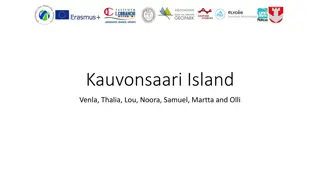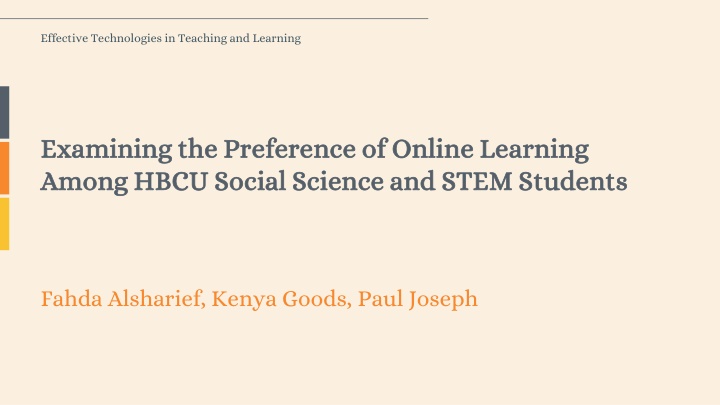
Impact of Online Learning on HBCU Social Science and STEM Students
Explore the significance of online learning on Historically Black Colleges and Universities (HBCUs), particularly affecting Social Science and STEM students. Dive into research findings, literature review, and the future implications for HBCU education post-pandemic.
Download Presentation

Please find below an Image/Link to download the presentation.
The content on the website is provided AS IS for your information and personal use only. It may not be sold, licensed, or shared on other websites without obtaining consent from the author. If you encounter any issues during the download, it is possible that the publisher has removed the file from their server.
You are allowed to download the files provided on this website for personal or commercial use, subject to the condition that they are used lawfully. All files are the property of their respective owners.
The content on the website is provided AS IS for your information and personal use only. It may not be sold, licensed, or shared on other websites without obtaining consent from the author.
E N D
Presentation Transcript
Effective Technologies in Teaching and Learning Examining the Preference of Online Learning Examining the Preference of Online Learning Among HBCU Social Science and STEM Students Among HBCU Social Science and STEM Students Fahda Alsharief, Kenya Goods, Paul Joseph
Overview Overview Research shows that HBCUs' ability to integrate culturally relative learning styles into their classrooms has contributed to their ability to successfully graduate a large portion of the nation's Black college students, particularly STEM majors, and prepare them for graduate school. Yet, the COVID-19 pandemic has interrupted learning at all academic levels and institutions, transforming how students and teachers connect and exchange information. As the academic success of HBCUs is largely dependent upon their ability to deliver education and support in a culturally relative fashion,it is imperative that we gain insight into how online learning has either contributed to or threatened their efforts and the potential shifts that need to be made to ensure their continued success.
Significance of the Research Significance of the Research Those invested in the legacy and future of HBCUs must pay keen attention to any factors that potentially threaten their strengths, which include those which challenge their tried and tested learning styles and pedagogies. What we know about HBCUs' performance exists in a social context that is no longer applicable and entirely accurate. Sociologists have identified that a societal shift has occurred, and life before the COVID-19 pandemic appears to be qualitatively different than that which exists and will exist after its appearance. Researchers cannot assume that HBCUs will continue being successful at graduating Black students at the same rate they did before without considering the influence of virtual learning and how that impacts HBCUs' curriculum and learning styles. Likewise, HBCUs cannot move forward with the same practices before the pandemic without assessing those that arose during its peak. The pandemic impacted the institution of education in America, and we have yet to analyze how. Most importantly, the research concerning HBCUs' pedagogy and learning approaches needs to be updated to reflect this shift, to ensure that they can maintain and improve upon that which makes them invaluable.
Literature Review Literature Review In the Fall of 2015, one study attempted to better understand the student perceptions of an online criminal justice program by administering a survey. The study found an overall satisfaction among the student respondents about their online learning (Miles, 2020). Another study published in 2020 used regression models to determine the best predictors in HBCU students online course satisfaction in relation to gender, age, classification, number of online courses taken, learner-instructor interaction, learner-learner interaction, and learner-content interactions. All learner interactions were positive significant predictors in students satisfaction in their online courses, with learner-content being the strongest predictor. Age was also a significant predictor in students online course satisfaction, which indicated a negative correlation. In sum, results suggested that students over the age of 22 were dissatisfied with online courses, emphasis in learner-content interactions in online courses at HBCUs would strengthen student satisfaction, and learner- learner interactions were not as influential in online courses (Gilbert, 2020).
Literature Review Literature Review Yee et al. conducted and exploratory study to investigate non-traditional learners' perceptions and experiences of online learning at a public HBCU. They assessed student s interactivity with peers, teachers, administrators, content, and technology and fellow-student support. Six non-traditional African American women were interviewed on their perceptions of their online learning experiences. The authors reported using Freire's Liberation Pedagogy and Critical Race Theory as the theoretical to situate participants' voices and perceptions of online learning in a wider social, economic, and political context . Elicited themes were extracted via constant comparative method and the use of NVivo. The participants had previously studied in the traditional classrooms at two or more higher education institutions. Overall, students indicated that online learning provided more access and degree completion opportunities at an HBCU. All the non- traditional African American female participants at the public HBCU secured financial aid to study (Yee et al., 2012).
Literature Review Literature Review Driscoll et al assessed differences in student performance and satisfaction across online and face-to-face (F2F) classroom settings. They used data from 368 students enrolled in three online and three F2F sections of an introductory-level sociology course and compared student satisfaction/performance on midterm exams and various variables. Results indicate that differences in student performance between the two settings may be accounted for by the presence of a selection effect and that student satisfaction does not significantly differ across the two settings (Driscoll, 2012). Another study examined the pedagogy of psychology online instruction from students' perceptions and satisfaction levels among those in 4 fully online Psychology courses in the Fall semester of 2016 at an HBCU in Georgia. Findings revealed that the majority of students were "very satisfied" with all the course-related elements except for peer networking and support (47%). Every student reportedly satisfied with the current level of incorporating multimedia (Haywood et al., 2018).
Research Aims and Objectives Research Aims and Objectives The purpose of this research is to examine how HBCU students have fared with the transition to virtual learning during the COVID-19 pandemic. By conducting this investigation, the researchers hope to identify how virtual learning supports and poses challenges to previously dependable learning styles and approaches that have undergirded HBCUs' ability to successfully graduate a significant portion of the nation's Black graduates, particularly those who are STEM majors. Ultimately, the researchers hope to produce findings that will advance the work on effective teaching and learning strategies for HBCUs and amplify any new concerns and needs of HBCU students that may have come to the surface due to the COVID-19 pandemic. RQ1. person learning? How do current social science and STEM majors at HBCUs feel about virtual learning compared to in- RQ2. exposed to in their respective courses? What patterns emerge when students' responses are compared with the learning styles they were
Anticipated Findings Anticipated Findings A. STEM majors may report a stronger disdain for online learning than social science majors. A. Health considerations, rather than solely learning style, may play a role in students' preferences. A. Students may express a preference for specific courses to be taught online.
Methods: A Qualitative Approach Methods: A Qualitative Approach Method: Online, in-depth interviews (focus groups) conducted throughout the Spring 2022 semester. Students will recall their experiences from the 2020-2021 Academic Year. Location: Howard University Eligible Participants: Current undergraduate STEM and social science majors (identified via Academic Departments & Units). Recruitment: E-mails sent via Academic Department listserv; flyers posted throughout campus; online call for participants via social media. Analysis: NVivo. Open, Axial, and Selective Coding. Compare syllabi from students respective courses with their responses to identify effective or ineffective learning strategies.
COAS Social Science and STEM Majors COAS Social Science and STEM Majors
References References Gilbert, S. (2020). Students Satisfaction with Interactions in Online Courses at Historically Black Colleges and Universities (HBCUs). Miles, J. P. (2020). Types of Social Support in Distance Education and Academic Performance at a Southwestern Historically Black College and University (Doctoral dissertation, Eastern Kentucky University). Trimble, J., & Murty, K. S. (2017). A study of student perceptions toward online undergraduate criminal justice courses at an HBCU. Race, Gender & Class, 24(1-2), 172-185. Toler, M. D. (2020). Comparing Face-to-Face and Online Academic Outcomes of African American Women Students Enrolled in Developmental Mathematics at an HBCU (Doctoral dissertation, Morgan State University). Yee Chief, I. M. (2012). Perceptions of Online Learning Experiences: Voices of African American Women at a Historically Black College and University. ProQuest LLC. Salvo, S., Shelton, K., & Welch, B. (2017). African American males and online education: A review of the literature. Online Journal of Distance Learning Administration, 20(4), 1-20. Flowers, L. O., White, E. N., Raynor Jr, J. E., & Bhattacharya, S. (2012). African American students participation in online distance education in STEM disciplines: Implications for HBCUs. SAGE Open, 2(2), 2158244012443544.
Palmer, R. T., Davis, R. J., & Thompson, T. (2010). Theory meets practice: HBCU initiatives that promote academic success among African Americans in STEM. Journal of college student development, 51(4), 440-443. Beasley, R. (2010). HBCU distance learning 2010. Howard Universitys Distance Learning Lab. Flowers, L. A., Flowers, L. O., Flowers, T. A., & Moore III, J. L. (2014). Examining the effects of online distance education on African American students' perceived learning. Black History Bulletin, 77(1), 21-26. Moore, D. (2014). An investigation of the attrition of African-American students in an online undergraduate program (Doctoral dissertation, Nova Southeastern University). Kwun, O., Alijani, G. S., Mancuso, L. C., & Kevin Fulk, H. (2012). Student Perceptions Of Online Courses And Behavior In Historically Black Colleges And Universities (HBCU). Franklin Business & Law Journal, 2012(2). Williams, K. (2015). The impact that technology and social systems have on African American student enrollment growth in totally online, hybrid/blended online, and face-to-face undergraduate degree programs. Morgan State University. Flowers, L. O. (2012). Exploring HBCU student academic self-efficacy in online STEM courses. The Journal of Human Resource and Adult Learning, 8(1), 139.
Williams, C. Q. (2015). Black Online, Doctoral Psychology Graduates' Academic Achievement: A Phenomenological Self-Directed Learning Perspective (Doctoral dissertation, Walden University). Freeman, P., Johnson, W., & Ross, W. (2006, March). Moving from the Traditional Class to ITVN and Web-Based Classes: Successes and Pitfalls at a HBCU. In Society for Information Technology & Teacher Education International Conference (pp. 3417- 3423). Association for the Advancement of Computing in Education (AACE). Merrills, J. M., Cooper, J., & Bird, N. (2011, October). A Means to an End: Perceptions about Online Learning at a Historically Black University. In E-Learn: World Conference on E-Learning in Corporate, Government, Healthcare, and Higher Education (pp. 2446- 2451). Association for the Advancement of Computing in Education (AACE). Summers, J. J., Waigandt, A., & Whittaker, T. A. (2005). A comparison of student achievement and satisfaction in an online versus a traditional face-to-face statistics class. Innovative Higher Education, 29(3), 233-250. Driscoll, A., Jicha, K., Hunt, A. N., Tichavsky, L., & Thompson, G. (2012). Can online courses deliver in-class results? A comparison of student performance and satisfaction in an online versus a face-to-face introductory sociology course. Teaching Sociology, 40(4), 312-331. Abdous, M. H., & Yen, C. J. (2010). A predictive study of learner satisfaction and outcomes in face-to-face, satellite broadcast, and live video-streaming learning environments. The Internet and Higher Education, 13(4), 248-257.
Zacharis, N. Z. (2011). The effect of learning style on preference for webbased courses and learning outcomes. British Journal of Educational Technology, 42(5), 790-800. Daymont, T., Blau, G., & Campbell, D. (2011). Deciding between traditional and online formats: Exploring the role of learning advantages, flexibility, and compensatory adaptation. Journal of Behavioral and Applied Management, 12(2), 156. Crews, T. B., Wilkinson, K., & Neill, J. K. (2015). Principles for good practice in undergraduate education: Effective online course design to assist students success. Journal of Online Learning and Teaching, 11(1), 87-103. Ngoyi, L., & Malapile, L. S. (2018). Social presence and student engagement in online learning. In Student engagement and participation: Concepts, methodologies, tools, and applications (pp. 1228-1237). IGI Global. Wilson, D., & Allen, D. (2011). Success rates of online versus traditional college students. Research in Higher Education Journal, 14.




